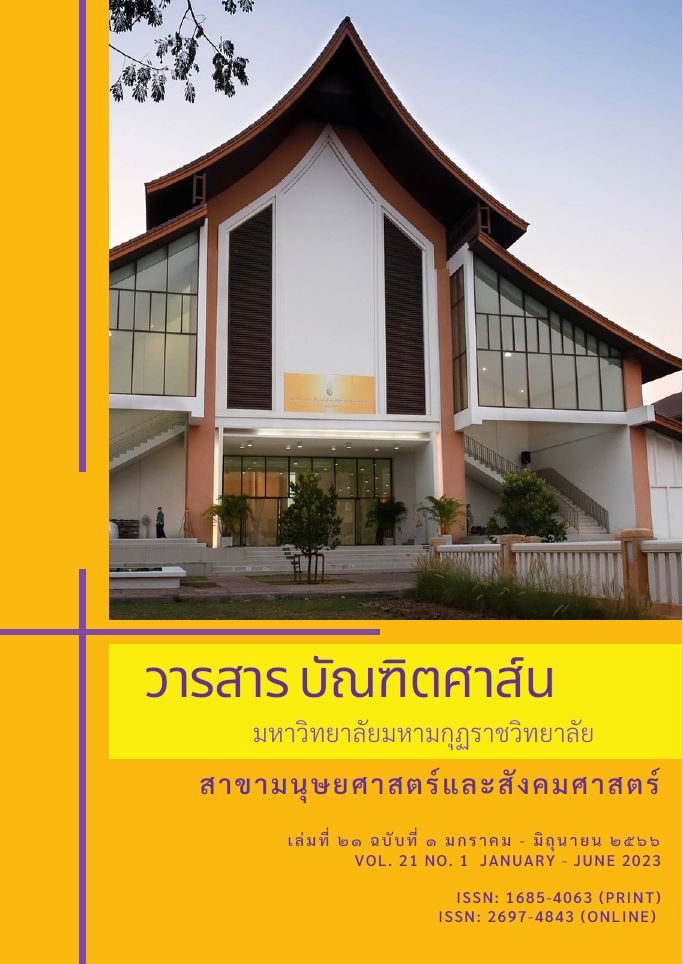Attitude towards New Management Mode of Linguistic Landscape Programs in Chinese University Language Resources and its Decision Tree Analysis
คำสำคัญ:
Education management mode, University language resources, Intelligent collaboration, Analytic hierarchy process, Decision tree analysisบทคัดย่อ
In order to survey the attitudes towards the different social participants of intelligent collaboration program on linguistic landscape in Chinese university language resources and university technology resources, and find effective methods and applied path to develop new management mode in Chinese university language education and professional training quality of foreign language majors, this article is to carry out attitude survey towards new management mode, namely Government-Industry-University-Research management mode.. And it describes the hierarchical comprehensive evaluation index for the construction of quality monitoring system on linguistic landscape with two steps: 1) the first step is to use analytic hierarchy process (AHP) to decompose the quality monitoring of linguistic landscape into multi-level and multi-dimensional index system, model and quantify the implementation process of quality monitoring, and to construct the first and second-class index system to solve the current problems of quality monitoring and quality improvement; 2) the second step is to use Decision tree(DA) analysis to view the evaluation and suggestions of experts in relevant fields on various indicators at all levels from collect feedback results, ensure scientific and reasonable determination of quality monitoring indicators through supplement and scientific revision. The conclusion is that: 1) The new management mode of linguistic landscape programs will benefit the education quality of foreign language majors and improve their service function for the society development. 2) The new management mode will benefit the government department on language technology resources, linguistic technology platform, intelligent collaboration and talents mapping of local city development.
เอกสารอ้างอิง
Aiestaran, J., Cenoz, J. and Gorter, D. (2010). Multilingual Cityscapes: Perceptions
and Preferences of the Inhabitants of the City of Donostia-San Sebastián. In E.
Shohamy, E. Ben-Rafael and M. Barni (eds) Linguistic Landscape in the City
(pp. 219-234). Bristol, Buffalo, Toronto: Multilingual Matters.
Backhaus, P. (2006). Multilingualism in Tokyo: A Look into the Linguistic Landscape.
In D. Gorter (ed) Linguistic Landscape: A New Approach to Multilingualism
(pp. 52-66). Clevedon, Buffalo, Toronto: Multilingual Matters.
Ben-Rafael, E. (2009). A Sociological Approach to the Study of Linguistic Landscapes.In E. Shohamy and D. Gorter (eds) Linguistic Landscape: Expanding the Scenery(pp. 40-54). New York: Routledge.
Ben-Rafael, E., Shohamy, E., Amara, M. H. and Trumper-Hecht, N. (2006). Linguistic
Landscape as Symbolic Construction of the Public Space: The Case of Israel.
In D. Gorter (ed) Linguistic Landscape: A New Approach to Multilingualism
(pp. 7-30). Clevedon, Buffalo, Toronto: Multilingual Matters.
Cong Zhang, Xiaoyi Fan, et al. (2019). Edge computing enabled smart grid. Big data, 5 (02): 64-78.
Dagenais, D., Moore, D., Sabatier, C., Lamarre, P. and Armand, F. (2009). Linguistic Landscape and Language Awareness. In E. Shohamy and D. Gorter (eds) Linguistic Landscape: Expanding the Scenery (pp. 253-269). New York: Routledge.
Durk Gorter (2006)Introduction: The Study of the Linguistic Landscape as a New Approach to Multilingualism International Journal of Multilingualism (3(1):1-6)https://doi.org/10.1080/14790710608668382.
Feng Xie, Yanrui Liu and et al. (2019). Design and implementation of Mobile Intelligent Collaborative Office System Based on wechat public platform. Mobile application, (12):73-75.
Geoff Mulgan. (2018). Big Mind: How Collective Intelligence Can Change Our World. Princeton University Press.
Gorter, D. (2006a). Introduction: The Study of the Linguistic Landscape as a NewApproach to Multilingualism. In D. Gorter (ed) Linguistic Landscape: A New Approach to Multilingualism (pp. 1-6). Clevedon, Buffalo, Toronto: Multilingual Matters.
Gorter, D. (2006b). Further Possibilities for Linguistic Landscape Research. In D. Gorter (ed) Linguistic Landscape: A New Approach to Multilingualism (pp.81-89). Clevedon, Buffalo, Toronto: Multilingual Matters.
Icek Ajzen (1993).Attitude Theory and The Attitude-behavior Relation. New directions in Attitude measurement. Walter de Gruyter Berlin, Newyork 1993:42-51.
Kallen, J. (2009). Tourism and Representation in the Irish Linguistic Landscape. In E. Shohamy and D. Gorter (eds) Linguistic Landscape: Expanding the Scenery (pp. 270-283). New York: Routledge.
Kallen, J. and Ní Dhonnacha, E. (2010). Language and Inter-language in Urban Irish and Japanese Linguistic Landscapes. In E. Shohamy, E. Ben-Rafael and M. Barni (eds) Linguistic Landscape in the City (pp. 19-36). Bristol, Buffalo, Toronto: Multilingual Matters.
Landry, R. and Bourhis, R. Y. (1997). Linguistic Landscape and Ethnolinguistic Vitality: An Empirical Study. Journal of Language and Social Psychology, 16 (1), 23-49.
Lawrence, C. B. (2012). The Korean English linguistic landscape. World Englishes,31 (1), 70-92.
Hefa Lv (2004). Chinese-English Translation of Public Signs,Chinese Science & Technology Translators Journal,(1).
Li Yang. (2017). The change of cognition, thinking and behavior by artificial intelligence. Exploration and contention, (10): 16-18.
Manca, E. (2008). From phraseology to culture: qualifying adjectives in the language of tourism. International Journal of Corpus Linguistics, 13(3): 368-385.
intelligence and librarians . Library work research, 4 (9): 290.
Mengmeng An, Xiumei Fan and Hanyu Cai. (2020). Research on intelligent cooperative control of traffic lights based on fog computing and reinforcement learning. Application Research of Computers, (2):465-469.
Peng Zhang, Kai Zhao, and et al. (2020). Research on intelligent cooperative operation network of missile-artillery integrated weapon system. Journal of Gun Launch and control, (1):66-70.
Rong Chai. (2020). Design and Implementation of Library Bibliographic Collaborative Intelligent Recommendation System. Microcomputer Applications, 36(4): 133.
Samit Kumar Das, Ujjwal Kumar Halder, Bapi Mishra and Debabrata Debnath. (2014).Study on Relationship between Attitude towards Education and Academic Achievement in Secondary Level Minority Students.Indian Streams Research Journal.Volume 4.Issue 10.Nov 2014.
ดาวน์โหลด
เผยแพร่แล้ว
รูปแบบการอ้างอิง
ฉบับ
ประเภทบทความ
สัญญาอนุญาต
ลิขสิทธิ์ (c) 2023 มหาวิทยาลัยมหามกุฏราชวิทยาลัย

อนุญาตภายใต้เงื่อนไข Creative Commons Attribution-NonCommercial-NoDerivatives 4.0 International License.
บทความวิชาการและบทความวิจัยในวารสารฉบับนี้ถือเป็นความรับผิดชอบของผู้เขียนเท่านั้น บทความที่ได้รับการตีพิมพ์ในวารสารบัณฑิตศาส์น ถือเป็นลิขสิทธิ์ของมหาวิทยาลัยมหามกุฏราชวิทยาลัย ตามพระราชบัญญัติลิขสิทธิ์



